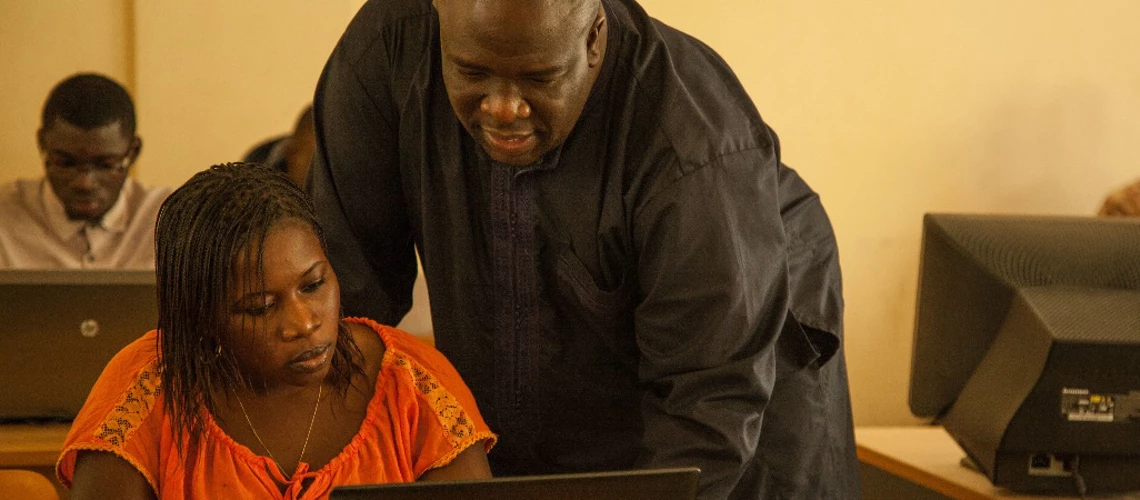Economic transitions, such as the green and digital transitions, globalization, and population aging, can dramatically shift labor demand – creating new jobs, destroying others, and changing required skills, with potential large differences in impact for the winners and losers in the workforce. This blog identifies five skills development strategies to improve job prospects for workers and boost economic growth during transitions.
Preparing the workforce for evolving employment opportunities
During economic transitions, workers must have or obtain the necessary skills to respond to changing labor demand, so that they benefit from evolving employment opportunities and skills gaps do not prevent the positive impact of transitions from materializing. But these transitions can occur so quickly that the skills of current workers become outdated, and new graduates do not enter the labor market well-prepared because education programs did not equip them with these newly demanded skills.
The resulting skill gaps and mismatches harm workers’ employability and economic competitiveness. These challenges can be exacerbated in ageing societies, especially when older workers have longer careers, more frequent job transitions, and limited upskilling opportunities.
It is, thus, important to take action to align the skills of the current and future workforce with the changing demand during transitions. The digital transition, for example, requires education and training systems to invest in skills that cannot be automated, such as critical thinking, problem solving, and socio-emotional skills.
Five requirements to develop skills for economic transitions
Based on past and ongoing transitions, we find five important lessons on how skills development can contribute to employability and competitiveness during transitions:
- Start early. Integrate skill needs assessments and interventions into transition strategies from the beginning. This will help prevent skills development from becoming an afterthought or not aligned with overall goals. To achieve this, it is important to have strong leadership and effective stakeholder coordination. Expected changes in skill needs should be addressed urgently from the early stages of a transition in policy strategies and in education and training strategies.
- Pay attention to context. Tailoring skills interventions to the specific context and pathway of each economy\’s transition is important. The pace of transition, the nature of emerging and declining jobs and industries, and associated changes in demand for skills will differ. The tourist-dependent Maldives, for example, is focusing on reducing single-use plastics that pollute the environment. In 2020, the World Bank approved a $107.4 million project to equip Maldivians with skills in eco-friendly practices.
- Coordinate closely with employers. Contextualization can be achieved through engaging firms in education and training provision. After all, firms that are part of a transition are well positioned to articulate the skills that are in demand, identify gaps, and help improve education and training programs. Partnerships between industry and education providers are more likely to materialize when firms consider skills constraints to be a significant risk to their productivity. Governments can help create a conducive environment for such partnerships. For example, ASML, a leading manufacturer of chip-making equipment based in The Netherlands, announced in 2024 that it will invest 80 million euros in a collaboration with Eindhoven University of Technology, after the government committed to invest 2.5 billion euros to support the technology sector.
- Include a focus on training the existing workforce. Improving access to and relevance of adult training is critical as many countries face challenges related to low participation, impact, and high costs in this area. To prepare adult learning systems for the future, workers of all ages need to have access to quality reskilling and upskilling opportunities for more digitized, globalized, and green jobs. This requires conducting skill needs assessments; increasing the offer of flexible, short and tailored online training programs; promoting in-firm training; offering career guidance and financial incentives; recognizing prior learning; and establishing micro-credentials.
- Support workers at-risk. Skills interventions should focus on ensuring a just transition that does not leave vulnerable workers behind. Workers who risk losing employability due to the transition, such as those in jobs associated with emission-intensive industries or jobs threatened by digital technologies, need support. This may require comprehensive support packages including training; career advice; job search assistance; wage subsidies; and entrepreneurship incentives.
Case studies: Skills development in Vietnam and Estonia
These strategies were used by Vietnam and Estonia to successfully prepare their workforce for economic transitions. Vietnam underwent a major transition by integrating into the global electronics value chain over the past two decades. This transition was driven by factors such as a favorable investment climate, competitive labor costs, and a strategic location in Southeast Asia. The Vietnamese government and private sector also heavily invested in education and training programs to upskill the workforce, demonstrating how successful integration into global value chains can boost skill development and economic growth through attracting foreign investment, promoting the transfer of technology and knowledge, and investing in education and training programs.
Estonia also achieved a successful transition driven, among others, by strong education components. Starting from a low base in the 1990s, Estonia accelerated it digital transition through its Tiger Leap Initiative. This included a strong focus on teaching digital skills, including by connecting all schools to the internet and updating computer labs. In 2023, Estonia was considered a global leader in digital government, and scored above the EU average on nearly all digital skills indicators of the Digital Economy and Society Index.
Ensuring successful transitions
Successful economic transitions require public and private sector decision-makers to play critical roles in providing the right skills opportunities to the right people at the right time through sound leadership and coordination. Prioritizing coherent, contextualized, and inclusive skills and transition strategies is essential to harness the growth potential of transitions while supporting worker employability and leaving no one behind.
source : world bank blogs



